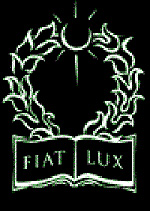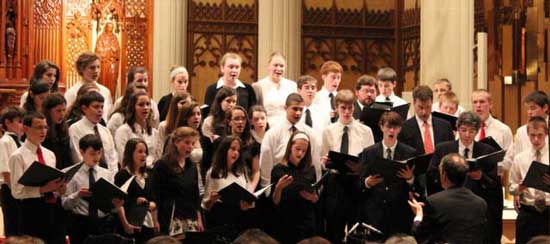

|
| Musical Musings: Miscellaneous |
|
|
The LyceumA School with a Noble Goal
The Lyceum aims to produce graduates who, having been formed by Catholic western civilization, then become bearers and guardians of that civilization. In more specific terms, the Lyceum aims to prepare its students not only for successful performance in excellent colleges, but to prepare students who will be a "leaven" in the world. Most importantly The Lyceum seeks to form students who will become lifelong learners in a joyful pursuit of the Truth who is Christ. The college prep curriculum is infused with the Seven Liberal Arts (Trivium and Quadrivium):
The Socratic Method (Seminar Method) is used in teaching at this Great Books institution, where "the writings of the greatest thinkers of the last 25 centuries" are used whenever possible as primary source material. The school's philosophy on religion is most refreshing in its "antiquity," stemming from the thoughts and practices of very early theologians and hierarchs: Aside from regular instruction in Theology from The Catechism of The Catholic Church (as well as from Fathers and Doctors of the Church and excellent Catholic Authors), Lyceum students receive an education that proceeds from an integration of faith and reason. There is no academic subject that is able to be taught divorced from the teachings of the faith or split off from the mind of the church. The school holds fast to the principle that all the sciences, philosophical disciplines, and arts are ultimately handmaidens to Theology. Ultimately to form students who are able to live, defend, and grow in the faith, demands that they study all subjects grounded in the habit of scientific and philosophical thinking that is most properly the mind of the Catholic. This is very impressive. But what most intrigued me about this school was their music program, based as it is around the Schola Cantorum, in which the whole student body participates.
Benedict XVI has highlighted the fact that sacred music, as Vatican Council II had made clear, "is a treasure of inestimable value, greater even than that of any other art.
The main reason for this pre-eminence is that, as sacred song united to the words, it forms a necessary or integral part of the solemn liturgy."
The singing of the Schola both is and isn't what you'd expect from high school musicians. The youthful voices produce a clean, unencumbered sound, as one might expect. The musicianship and the quality of their singing is well beyond high school level. Here's a video clip of "Hallelujah," from Handel's Messiah: I listened to a CD they recently produced, Ave verum corpus, and was delighted from beginning to end. Here's the astounding music I heard:
Young Catholics learning this music speaks for itself.
You can request a copy of this CD by emailing the Headmaster, Luke Macik, using a link on the Lyceum Schola page. |
Submit Your Music / Contact Us / Company Description / Links

